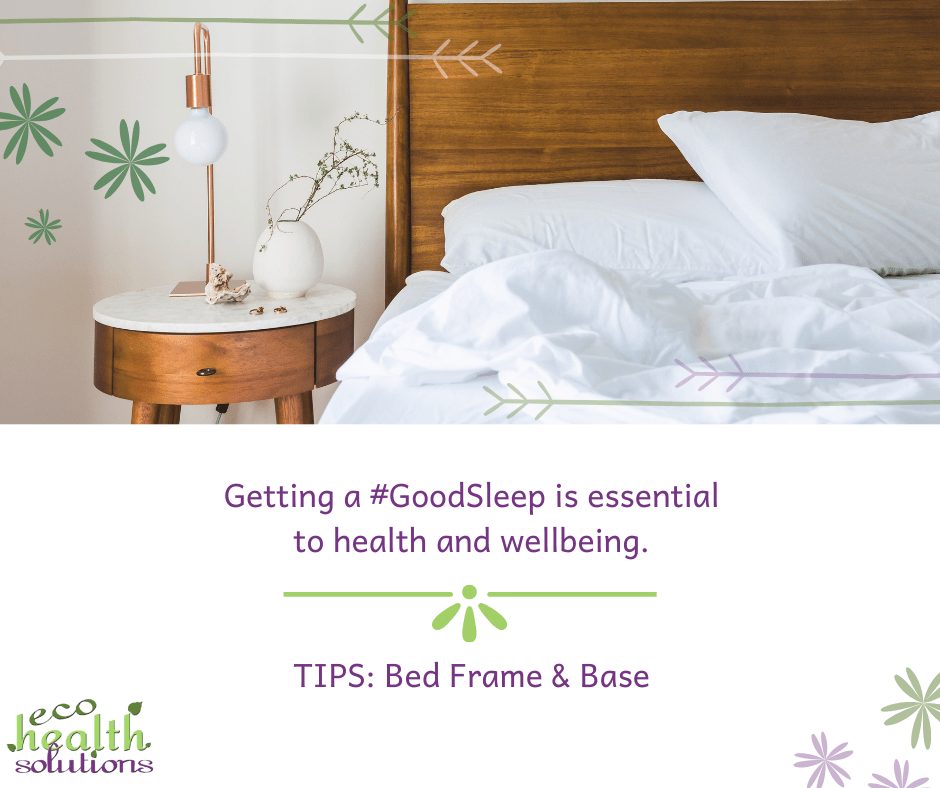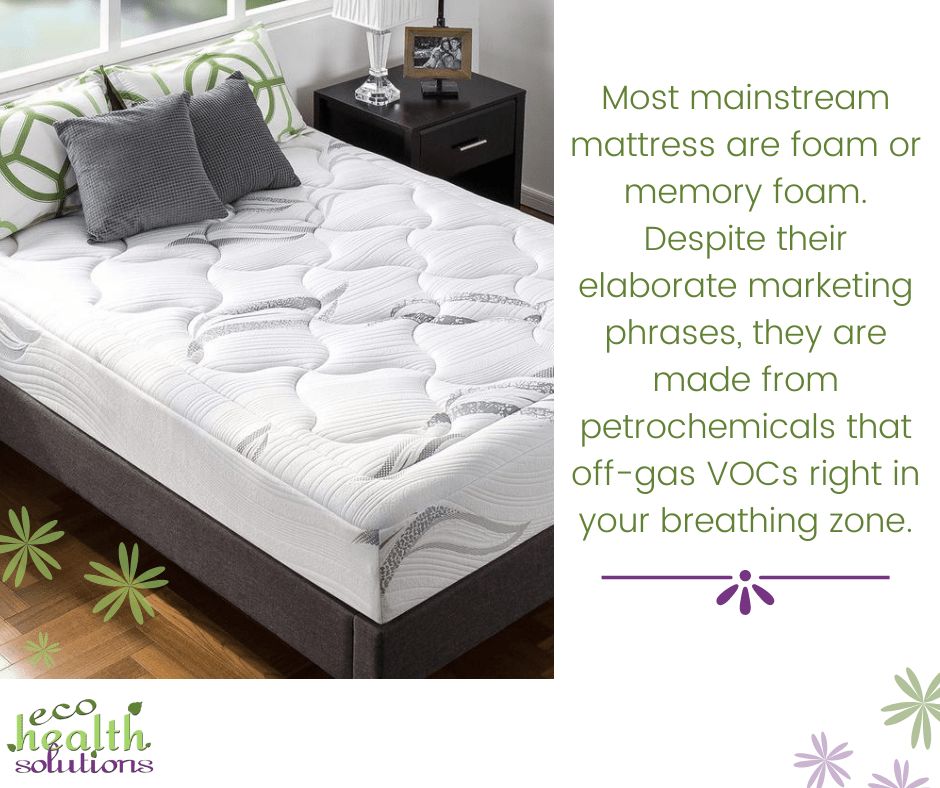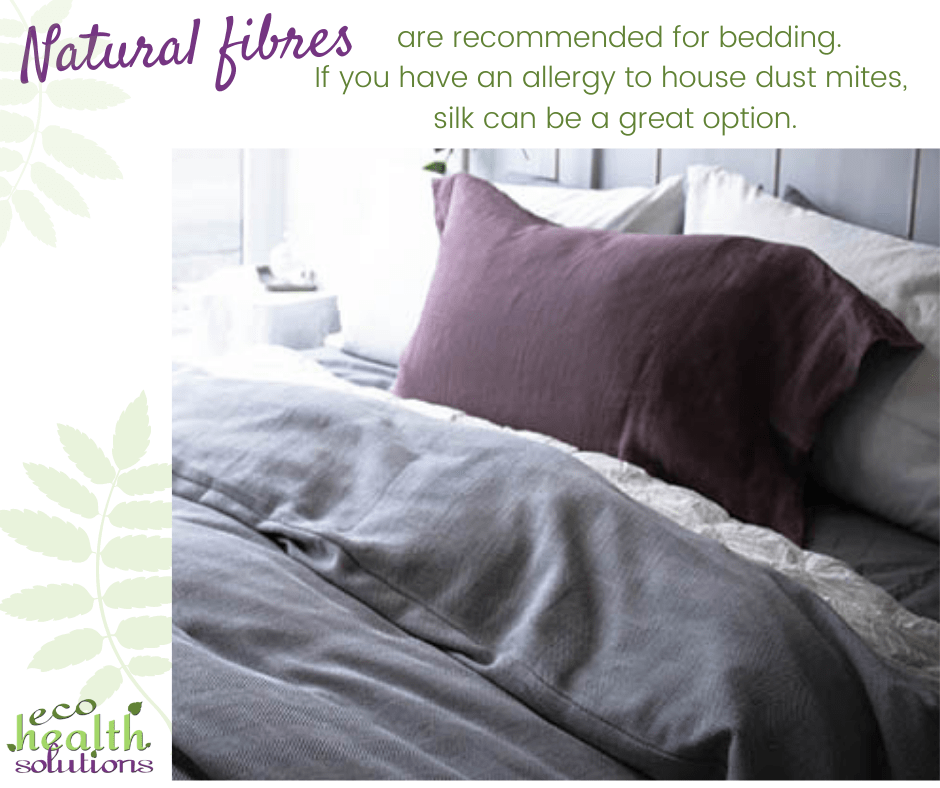Beds and Bedding: What to Consider
Beds and Bedding: What to Consider
Why Does it Matter?
Getting a good night’s sleep is crucial to good health. Sleep is the time when our bodies heal and recover from the day, they detoxify and rejuvenate, they reset ready to carry you through another day.
Our beds are one of the places in our homes that we spend the most time. For these reasons, it is vitally important to get out beds just right, so that they support us in our healing and detoxification processes.
Our beds should not increase our exposure to EMF or chemicals.
There are lots of things to consider with our beds – and in many cases, there are compromises to be made.

Beds and Bedding: Bed Base/Frame
Let’s start with the base – or the frame. Metal is not a good choice as it can conduct some types of EMF and reflect others.
#ideal The best option is a wooden bed frame with a wooden slatted base.
Why?
Because this allows air to flow around the bed, which can assist it in drying out, therefore reducing the risk of mould and house dust mites.
What to look for:
- Slats
- All wood
- Untreated wood (ie not CCA – not the green-tinged wood)
- Natural wood (unfinished)
- You can apply an oil or varnish that suits your needs. Livos have a good range.
What to avoid:
- Beds with a solid base
- Beds with storage underneath
- Slats that have been coated with polyurethane base
- If you are sensitive, you may wish to avoid pine
Beds and Bedding: Mattress
In my opinion, mattresses are the biggest areas of compromise when it comes to beds and bedding.
Here’s the lowdown.
Most mainstream mattress are foam or memory foam. Despite their elaborate marketing phrases, they are made from petrochemicals that off-gas VOCs right in your breathing zone.
I’ve reviewed a product where they claim it is made from the same product as baby oil and therefore it is safe. Baby oil is mineral oil – petrochemical – and shouldn’t be used!
#mustknow Locally made is important, as our strict standards for textiles (and footwear) aren’t applied to imported goods. That is why several years ago, there were many imported mattresses with dangerously high levels of formaldehyde.
What is ideal is a locally made futon that contains natural fibres, eg cotton.
The downside of a futon is that you have to roll it up every day to let it dry, and beat it so it stays plush. The latter is excellent for releasing frustration, however, the reality of doing this every day is unrealistic for most people.
I know many people lean towards natural latex, and whilst this has some benefits, the fact it is so hot to sleep on, to my mind, makes it more prone to mould.
Innerspring mattresses can do odd things to EMF – and there are risks associated for that reason.
There are also lots of organic mattresses, many locally made. However, apart from the hefty price tag, I have heard from many people about how uncomfortable they become over time.

This is where the compromise comes in. Unless you commit to the long term care of a futon, you need to weigh up the pros and cons of each.
What did I do?
I have reduced EMF in my bedroom. I then opted for an innerspring mattress on an oiled (like Livos) futon base.
The mattress had a lot of natural fibres in it, and no topper. There is no memory foam on it at all.
Choosing this was a compromise – but it was the best option for us at the time.
This isn’t an ideal option for everyone.
You have to make an informed choice, and part of it will be considering the EMF. (This is something I check periodically, as things do change.)

Beds and Bedding: Bedding
Bedding includes pillows, doonas/duvets, blankets, sheets, and so on.
Certified organic is a great option – and locally made not only ensures the product conforms to our standards, but also reduces the footprint and “bedding miles” travelled.
Natural fibres are recommended for bedding, and if you have an allergy to house dust mites, silk can be a great option.
#Pillows should be replaced every 2-3 years – more often if you have house dust mite allergies.
There are silk doonas on the market that are great for repelling house dust mites, but also they are meant to be fabulous for the different seasons. (I am yet to try one, but they sound dreamy – excuse the pun.)
While on the topic of replacing things – mattresses should be replaced every 10 years.
If you do have house dust mite allergies, there are fabulous covers you can get for your mattress, pillows and other bedding. Regular maintenance is also important.
With many thoughts to ponder, I will leave it there for now.
o0o
These posts may be of interest:
- If you want to know why house dust mites love mattresses, check out this post.
#beds #bedding #healthychoices #EMF #dustmites
